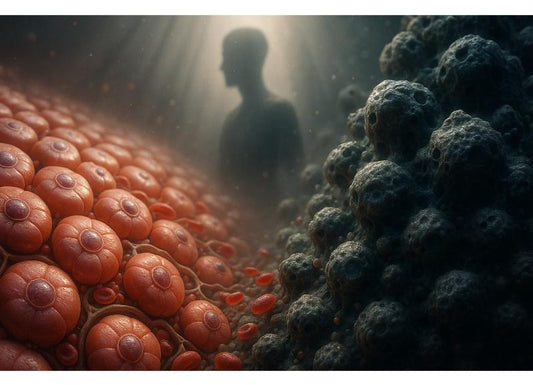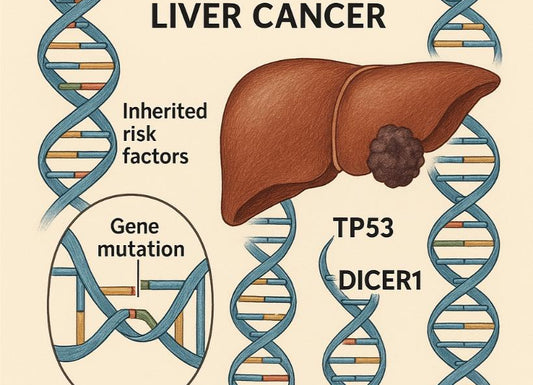Bilirubin Low: What Does This Mean For You?
 Written By
Jaclyn P. Leyson-Azuela, RMT, MD, MPH
Written By
Jaclyn P. Leyson-Azuela, RMT, MD, MPH

Bilirubin low, if present, usually isn’t a cause for concern or alarm. Still, understanding why it happens can give you peace of mind and help you take better care of your liver and blood health. Bilirubin is the aftermath of the breakdown of old red blood cells (otherwise known as senescent RBCs) and the waste products are being processed in the liver. Knowing what a bilirubin result means can help you interpret your lab tests with confidence and make informed choices.
This article explains everything you need to know about low bilirubin levels, their causes, symptoms, risks, and how you can monitor your liver health at home using simple tools like urine test strips.
Key Insights
-
Low bilirubin often indicates efficient liver function, not disease.
-
Normal total bilirubin levels are 0.1–1.2 mg/dL for adults.
-
Medications, diet, or hydration can cause temporary low readings.
-
Persistently low bilirubin may relate to oxidative stress imbalance.
-
At-home urine test strips help you track overall liver and kidney health.
-
Pregnancy can naturally lower bilirubin without concern.
-
Low bilirubin rarely causes symptoms and doesn’t require treatment.
What Is Bilirubin and Why Is It Measured?
If you’ve seen bilirubin on your blood test results, it measures how well your liver clears waste from your body. Bilirubin is a yellow pigment formed when your body breaks down old red blood cells.
Understanding Bilirubin Types
There are different types bilirubin in the body, including:
-
Total bilirubin includes both direct and indirect forms
-
Indirect bilirubin (unconjugated) forms first when the RBCs break down
-
Direct bilirubin (conjugated) forms after the liver processes it, making it water-soluble appropriate for excretion
A typical normal range for total bilirubin in adults is 0.1–1.2 mg/dL. Values below this range indicate bilirubin low, while higher values suggest possible liver stress or bile flow issues.

Why Bilirubin Testing Matters
Your doctor will request for bilirubin levels to:
-
Check liver function
-
Diagnose causes of jaundice (if this is your presentation during consultation)
-
Monitor RBC breakdown
-
Track progress of liver diseases
In other words, this test creates a snapshot of how well your body is balancing waste and detoxification.
What Are the Causes of Low Bilirubin?
If your bilirubin levels are below normal, it may not be a cause for concern. The reason may be that your liver is efficiently clearing out toxins from your body or is good at processing waste. Or, it may indicate some other things. Low bilirubin doesn’t usually mean disease, but there are factors that reduce its levels during testing.
Common Causes of Low Bilirubin
-
Medication-induced low bilirubin levels. It may be caused by drugs like barbiturates or high doses of vitamin C, which can artificially lower bilirubin levels in lab results
-
Lifestyle factors could also result in low levels of bilirubin, particularly diets very low in fat, poor nutrition, or dehydration can cause small fluctuations
-
Testing artifact, which is a common lab error, or the test timing can be the source of low bilirubin levels (false low reading)
-
Liver overactivity-related low bilirubin may mean your liver is very efficient or has a very high enzyme activity, which might reduce bilirubin faster than average
Medical Conditions Linked to Low Bilirubin
In rare cases, persistently low levels of bilirubin may be related to:
-
Oxidative stress imbalance (too few antioxidants in the blood)
-
Certain cancers or chronic illnesses that may affect the RBCs lifespan
-
Cardiovascular risk markers, as studies suggest bilirubin has a protective antioxidant effects
If your bilirubin low result appears without apparent symptoms, your doctor may re-test before considering other causes.
Is Low Bilirubin Dangerous or Benign?
If your bilirubin is low, more often than not it is benign and not a cause of worry at all. However, your body may be missing out on some natural antioxidant protection.
What Does a Low Bilirubin Test Result Mean for an Adult?
For most healthy adults, a low bilirubin test result means your liver is functioning normally and clearing waste efficiently. And, it rarely requires treatment or replenishment.
However, if low bilirubin is combined with abnormal liver enzyme levels, your doctor may check for related conditions like overfunction or metabolic issues.
What Health Risks Are Associated With Very Low Bilirubin?
Some studies suggest low bilirubin may slightly increase the risk of the following:
-
Heart disease (since bilirubin has antioxidant roles)
-
Stroke risk (due to reduced oxidative protection)
-
Diabetes likelihood, although a scientific consensus is yet to be reached
Still, these are associations, not direct causes. In most healthy people, low bilirubin is simply a normal variation.
Can Medications Lower Bilirubin?
Yes. Certain medications or supplements can cause bilirubin levels to drop, including:
-
Phenobarbital and other barbiturates
-
Steroids or anti-inflammatory drugs
If you’re taking these medications, mention it to your healthcare provider before interpreting lab results.
What Symptoms or Conditions Are Linked to Low Bilirubin?
Low bilirubin usually produces no symptoms. You may only notice it when reading your lab results.
When You Might Feel Effects
In rare instances, people with persistently low bilirubin may experience:
-
Fatigue or mild weakness (if linked to overall RBC turnover)
-
Increased susceptibility to oxidative stress, which is the body’s ability to handle free radicals
-
Possible higher inflammation markers on lab tests
Related Conditions
Low bilirubin may appear with:
-
Pregnancy (especially late term, due to increased plasma volume)
-
Chronic illness or malnutrition
-
Anemia with rapid red blood cell turnover
-
Certain cancers or infections where bilirubin protection is reduced
However, none of these are common, and most low bilirubin results are harmless findings in otherwise healthy individuals,
How Is Low Bilirubin Diagnosed and Managed?
If your doctor notices low bilirubin levels, they usually check for the context of what causes it. You may find yourself answering questions that will complete your medical history. Bilirubin levels are part of a liver function panel, so your doctors also review other markers like the AST, ALT, ALP, and other enzyme values.
Step-by-Step Diagnosis
-
Review of the full liver panel. Doctors will review all liver-related markers, not just bilirubin to ascertain whether it is a liver-related condition or not.
-
Checking your medication history. Some drugs (mentioned previously) artificially alter bilirubin levels.
-
Repeat the test. To minimize false low readings, repeating the test is sometimes necessary. Bilirubin, as you know, fluctuates significantly on a daily basis. And, repeating the test ensures accuracy of the first test.
-
Evaluation of nutritional and hydration status. A poor diet and hydration can influence the result.

Management and Lifestyle Considerations
If low bilirubin level persists but all other markers are normal, there may be one or two things that cause it. But you should consider the following:
-
Maintain a balanced diet rich in antioxidants (e.g., berries, leafy greens, and nuts)
-
Stay hydrated to support normal liver processing
-
Limit alcohol and avoid taking excessive medications unless prescribed
-
Use at-home test strips periodically to monitor your liver and kidney function between doctor visits
You don’t need treatment for low bilirubin unless it’s part of a broader medical condition that requires efficient management.
When Should You See a Doctor for Low Bilirubin?
You should see a doctor if your bilirubin low reading comes with additional symptoms like fatigue, pale stools, or yellowing of the skin (also known as jaundice), which would suggest other liver issues.
See a Doctor If:
-
You have persistent fatigue or dark urine
-
Your liver enzymes are abnormal in addition to low bilirubin
-
You’re pregnant and your doctor wants to monitor your liver function closely
-
You notice unexplained weight loss, appetite changes, or digestive issues
When It’s Likely Benign
If your bilirubin is slightly below 0.1 mg/dL but all other values are within range, it’s highly likely that it isn’t a cause for concern. Retesting after hydration or dietary adjustment often brings the levels back to normal.
Can At-Home Urine Tests Help Monitor Liver or Blood Health?
Yes, at-home urine test strips can help you keep an eye on your overall liver health between doctor visits. They don’t measure bilirubin levels directly like it does with a blood workup, but some strips can detect urobilinogen in urine, which may be an overview of the liver function.

How Can I Track Liver Health Over Time at Home?
-
Use urine test kits that check for the presence of urobilinogen, protein, glucose, and pH
-
Compare color changes with the chart provided in the kit or subscribe to a smartphone-based app to read the results almost instantly
-
Note your results over time by recording the results, especially if you’re managing a liver-related conditions
-
If your urine test shows a persistently present urobilinogen or has an unusual color, follow-up with your doctor for a liver function test
-
Never attempt to diagnose yourself
At-home liver testing using urine test strips are not meant to replace laboratory standards and medical protocols.
Benefits of Self-Monitoring
-
Helps you stay proactive about your health
-
Provides early signs if liver or kidney issues are developing
-
Complements clinical testing by giving you regular feedback
While at-home urine tests are useful, they do not replace professional laboratory testing. Always confirm abnormal findings with a healthcare provider.
Is Bilirubin Seen in Pregnancy or Newborns?
Yes. Bilirubin levels are naturally seen in pregnancy and newborn development.
In pregnancy, bilirubin is seen commonly as high results in pregnancy and most often is due to conditions such as acute fatty liver, HELLP syndrome, and even intrahepatic cholestasis of pregnancy. So, doctors often check for these especially when the pregnancy is particularly deemed high risk.
In newborns, increase in bilirubin (not low) is often seen, which requires no treatment at all. The cause is often because of high turnover of RBCs once the baby is born, the breakdown of which results in increased unconjugated bilirubin.
However, when neonatal bilirubin remains high for about 14–21 days or longer, this may already be a cause of concern. It should prompt you to bring your baby for evaluation.
There may be instances when bilirubin is low but this doesn’t usually cause a concern because it just means that the liver is functioning really well.
If you’re a new parent, your baby’s bilirubin level is one of the first signs doctors monitor to ensure that your baby has a healthy liver development.
Bilirubin Normal Range Chart
Here’s a quick reference for normal bilirubin levels by age and condition:
|
Category |
Total Bilirubin (mg/dL) |
Direct Bilirubin (mg/dL) |
|
Adults |
0.3-1.0 mg/dL |
0.2-0.8 mg/dL |
|
Newborns |
1.0-12.0 mg/dL |
Always interpret these ranges with your doctor since lab methods can differ.
How Low Bilirubin Connects to Heart and Metabolic Health
While low bilirubin levels itself is not harmful, studies suggest that it may play a role in how your body protects itself from oxidative damage. Low levels could mean you are more at risk for conditions that are a result of oxidative stress.
The Role of Bilirubin as an Antioxidant
Bilirubin helps in neutralizing free radicals. When levels drop too low, it would mean:
-
The body may lose some natural antioxidant defense
-
Over time, this could significantly increase oxidative stress
-
This may result in higher incidence of heart disease or stroke risk in some populations

What You Can Do
-
Eat foods high in antioxidants (e.g., fruits, vegetables, and green tea)
-
Avoid smoking and heavy alcohol use
-
Keep blood sugar levels stable to reduce oxidative stress
-
Maintain regular exercise for healthy circulation
These small lifestyle adjustments help offset any minor risk linked to low bilirubin.
Practical Self-Care Tips for People With Low Bilirubin
There are a lot of things you can do to provide support to your liver and blood health naturally. You can adapt simple daily steps, including:
-
Eating balanced and healthy meals (lean meat, complex carbs, and healthy fats)
-
Drink enough water to keep your urine light yellow
-
Avoid skipping meals, which can influence bilirubin metabolism
-
Limit over-the-counter medications unless it is necessary
-
Use home test strips once or twice a month if you’re monitoring liver wellness
Adapting these habits can help maintain liver function. And, it can give you insight into how your body is processing waste and nutrients.
Can You Increase Bilirubin Naturally?
In most cases, there is no need to raise bilirubin levels or treat this at all. However, if your doctor suggests monitoring, small lifestyle changes can go a long way in keeping the balance.
How to Support Healthy Bilirubin Production
As mentioned, you need to eat regularly, include antioxidants in your meal, get enough sleep to reduce free radicals, and avoid excess alcohol or processed foods.
If you’re curious about your bilirubin pattern, request repeat testing to confirm stability rather than focusing on single results.
Related Resources
Is F3 Liver Fibrosis Reversible?
Bilirubin in Urine: Causes, Symptoms, Detection, and Treatment
Quick Summary Box
-
Low bilirubin means your liver is processing waste efficiently.
-
Common Causes include medication effects, low-fat diet, hydration changes.
-
Risks are minimal, but may reduce antioxidant protection slightly.
-
Maintain a healthy diet, stay hydrated, and retest if concerned.
-
Use at-home urine test strips for liver and kidney health awareness.
References
Ansong-Assoku, B., Ankola, P. A., Shah, S. D., & Adnan, M. (2024, February 12). Neonatal Jaundice. National Library of Medicine; StatPearls Publishing. https://www.ncbi.nlm.nih.gov/books/NBK532930/
Čepelak, I., Dodig, S., & Pavić, I. (2025). Bilirubin – new insights into an old molecule. Biochemia Medica, 35(2). https://doi.org/10.11613/bm.2025.020501
Cohen, A. N., Kapitulnik, J., Ostrow, J. D., Zenone, E. A., Cochrane, C., Celic, L., & Cheney, H. (1985). Effects of phenobarbital on bilirubin metabolism and its response to phototherapy in the jaundiced Gunn rat. Hepatology (Baltimore, Md.), 5(2), 310–316. https://doi.org/10.1002/hep.1840050227
Dysart, K. (2025, June). Neonatal Hyperbilirubinemia - Pediatrics. MSD Manual Professional Edition. https://www.msdmanuals.com/professional/pediatrics/metabolic-electrolyte-and-toxic-disorders-in-neonates/neonatal-hyperbilirubinemia
Gandhi, M. H., & Gupta, V. (2022). Physiology, Maternal Blood. PubMed; StatPearls Publishing. https://www.ncbi.nlm.nih.gov/books/NBK557783/
Gilmour, S. M. (2004). Prolonged neonatal jaundice: When to worry and what to do. Paediatrics & Child Health, 9(10), 700–704. https://doi.org/10.1093/pch/9.10.700
Guarino, M., Cossiga, V., & Morisco, F. (2020). The interpretation of liver function tests in pregnancy. Best Practice & Research Clinical Gastroenterology, 101667. https://doi.org/10.1016/j.bpg.2020.101667
He, Z., Li, X., Yang, H., Wu, P., Wang, S., Cao, D., Guo, X., Xu, Z., Gao, J., Zhang, W., & Luo, X. (2021). Effects of Oral Vitamin C Supplementation on Liver Health and Associated Parameters in Patients With Non-Alcoholic Fatty Liver Disease: A Randomized Clinical Trial. Frontiers in Nutrition, 8, 745609. https://doi.org/10.3389/fnut.2021.745609
Kalakonda, A., John, S., & Jenkins, B. A. (2022). Physiology, Bilirubin. National Library of Medicine; StatPearls Publishing. https://www.ncbi.nlm.nih.gov/books/NBK470290/
Libor Vítek, Jirásková, A., Malíková, I., Dostálová, G., Lenka Eremiášová, Danzig, V., Linhart, A., & Haluzík, M. (2022). Serum Bilirubin and Markers of Oxidative Stress and Inflammation in a Healthy Population and in Patients with Various Forms of Atherosclerosis. Antioxidants, 11(11), 2118–2118. https://doi.org/10.3390/antiox11112118
Mount Sinai. (2024). Bilirubin blood test Information | Mount Sinai - New York. Mount Sinai Health System. https://www.mountsinai.org/health-library/tests/bilirubin-blood-test
Stocker, R., Yamamoto, Y., McDonagh, A., Glazer, A., & Ames, B. (1987). Bilirubin is an antioxidant of possible physiological importance. Science, 235(4792), 1043–1046. https://doi.org/10.1126/science.3029864
Suh, S., Cho, Y. R., Park, M. K., Kim, D. K., Cho, N. H., & Lee, M.-K. (2018). Relationship between serum bilirubin levels and cardiovascular disease. PLOS ONE, 13(2), e0193041. https://doi.org/10.1371/journal.pone.0193041
Wehbi, M. (2020). Bilirubin: Reference Range, Interpretation, Collection and Panels. EMedicine. https://emedicine.medscape.com/article/2074068-overview?form=fpf
Yang, M., Ni, C., Chang, B., Jiang, Z., Zhu, Y., Tang, Y., Li, Z., Li, C., & Li, B. (2019). Association between serum total bilirubin levels and the risk of type 2 diabetes mellitus. Diabetes Research and Clinical Practice, 152, 23–28. https://doi.org/10.1016/j.diabres.2019.04.033

Jaclyn P. Leyson-Azuela, RMT, MD, MPH, is a licensed General Practitioner and Public Health Expert. She currently serves as a physician in private practice, combining clinical care with her passion for preventive health and community wellness.



